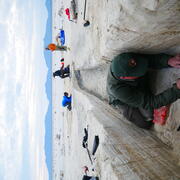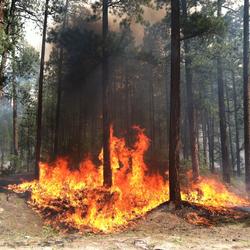Fire
Fire historically has played a critical role in shaping and maintaining ecosystems, and its management is of critical importance to society. The Ecosystems Land Change Science Program conducts research nationally to document the history, causes, and impacts of wildfire over decades to millennia. This research is supporting development of sustainable fire management strategies by managers.













